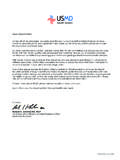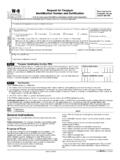Transcription of The 360° Customer View
1 White Paper The 360 Customer view Helping You Understand Your Company's Greatest Asset Copyright 2006, 360 DegreeView, LLC. Introduction Most companies talk about being Customer Focused or Customer Centric. All too few can back up their talk with the right tools and approaches. The 360 Customer view creates an integrated view of the Customer right across your enterprise. It gives you a business framework for integrating, enhancing, managing, and analyzing Customer information, and allows for customized, phased implementations that deliver measurable business benefit. Few things frustrate a Customer more than not being recognized as they interact with different departments within an organization. With the 360 Customer view , an organization can provide consistent service to a Customer across all departments, from marketing to sales, operations, finance, and other business functions.
2 For the implementation team, the 360 Customer view provides a communication tool to keep all parties on the same page. It also facilitates a prioritized approach, making sure that everyone understands which features are must haves and which are nice to haves.. This white paper outlines a business framework for the 360 . Customer view , and the benefits it brings to an enterprise. 2. Copyright 2006, 360 DegreeView, LLC. The 360 The 360 Customer view (Figure 1) is a model for organizing, enhancing, and disseminating Customer data throughout the Customer organization. It consists of three layers: core data, enrichment, view and dissemination. This model is more than a data repository structure it provides a holistic approach for enhancing all aspects of the Customer relationship. Figure 1 360 Customer view The Core Data layer captures and structures all internal Customer data both static information (such as Customer ID, name and SSN), and more fluid data that is generated, collected, or updated regularly.
3 Transaction data includes billing, sales orders, cost allocations, and fees relating to the Customer . Account data gives a consolidated view of all accounts and contracts held by the Customer . This includes hierarchical account structures for both consumers and businesses. Interaction data brings together all communications between the Customer and the organization, including e-mails, Customer service calls, web site activity, and paper correspondence. Attribution data links campaigns and promotions to the Customer . 3. Copyright 2006, 360 DegreeView, LLC. The Enrichment layer draws upon the core data and adds external sources such as demographic, credit, and address validation information. This allows the corporation to categorize customers by revenue, credit risk, business size, and other attributes. Segmentation data provides a means for grouping customers for example, individuals can be grouped by household, and corporations can be grouped as parent-child entities.
4 The layer draws upon core and third-party Customer data to pull together key Customer relationships. The 360 Customer view incorporates third-party data for in-field enhancements such as address correction ( , Zip+4 ), augmentation data such as credit scores for individuals and DUNS for businesses, and offers match-merge logic to link customers based on key attributes. Data providers include Dun &. Bradstreet, Acxiom, IXI, and Experian. The Dissemination layer describes various access methods to the core and enrichment data. This includes traditional reporting and analytics, along with application programming interfaces (APIs) such as web services designed to share information. The API layer provides consistent access to consolidated Customer information for example, an interface to a marketing automation system, a self-service Customer web portal, or a feed to a vendor catalog.
5 The reporting layer provides canned and ad hoc reports to both internal and external consumers. The reports can be delivered in a variety of ways, including via the web, e-mail, and SMS. Cognos and Business Objects are two of the more popular reporting tools. The analytics layer supports advanced trending and forecasting analysis. This allows for scenario-based analysis where the end user can pose what if questions, using the underlying data to predict likely outcomes. It also supports bottom-up analysis, such as data mining. SAS and Microstrategy are two vendors that provide advanced analytical tools. 4. Copyright 2006, 360 DegreeView, LLC. Benefits Figure 2 shows how the 360 Customer view offers benefits throughout an organization. Figure 2 Constituents Marketing staff can leverage core data and segmentation data to compile a Customer feed.
6 Attribution data enables accurate measurement of the success of marketing campaigns. Analytics allow product development teams to determine Customer buying patterns. Sales staff can use core data to provide more personal and proactive Customer service, and to identify the most profitable Customer segments. Account hierarchies are valuable for improving penetration into key Customer organizations. Sales management can set up analytics to measure sales force effectiveness. Customer Service staff can use interaction data to measure effectiveness. Segmentation data can be used to identify the most valuable customers, and establish a tiered service plan based on a range of parameters. The 360 Customer view can underlie a self-service portal, significantly reducing interaction fees as customers manage their own accounts. Finance departments can use transaction data for more accurate Customer profitability analysis.
7 Senior Management can track Customer counts accurately on an ongoing basis. This is often used as a key corporate metric. 5. Copyright 2006, 360 DegreeView, LLC. Conclusion In summary, the business case for the 360 Customer view is strong. The 360 Customer view : z Reduces costs by providing a single source of clean, integrated Customer data. z Reduces time to market with new products and services by providing an accurate view of Customer buying patterns and product service bundles. z Increases Customer satisfaction, resulting in lower churn and increased profit margins. Your customers are your company's greatest asset. The 360 . Customer view helps you understand them better, serve them better, and do business better. 6. Copyright 2006, 360 DegreeView, LLC. About the Author Rick Abbott is President of 360 DegreeView, LLC.
8 He has over 19 years of information management and technology experience, including private and public sector work. On the commercial side, he has significant experience in both the Telecommunications and Financial Services industries. He has over 8 years of "Big 5" experience, including an associate partnership position with Deloitte Consulting. His primary focus over the past 11 years has been on large-scale business intelligence initiatives. He has direct experience in all aspects of business intelligence and data warehouse projects, including business case development, strategic planning and business alignment, business requirements, and technical architecture and design. He possesses over 10 years of large IT related project management experience. He also has significant experience in assisting clients in negotiating large technology product, service, and outsourcing contracts.
9 Rick can be reached at 7. Copyright 2006, 360 DegreeView, LLC.



